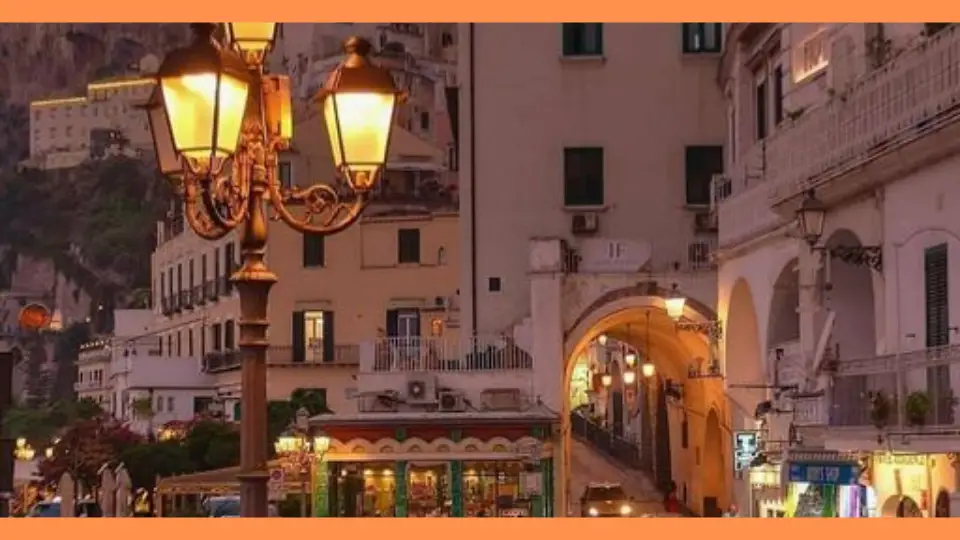Kyoto, the cultural heart of Japan, offers a unique blend of historical landmarks, exquisite cuisine, and enriching experiences. This guide provides an in-depth look into Kyoto’s top tourist destinations, culinary delights, practical travel tips, and cultural activities, ensuring an unforgettable journey through this beautiful city.
1. Introduction
Kyoto, once the capital of Japan, is a city that embodies the essence of traditional Japanese culture. Renowned for its classical Buddhist temples, as well as gardens, imperial palaces, Shinto shrines, and traditional wooden houses, Kyoto offers a serene retreat from the hustle and bustle of modern urban life.
Often referred to as the cultural heart of Japan, Kyoto is a must-visit destination for anyone interested in experiencing the country’s rich history and heritage.
Kyoto’s charm lies in its unique blend of ancient traditions and modern conveniences. From the exquisite beauty of its temples and shrines to the tranquil landscapes of its gardens, Kyoto is a city that captivates the senses.
Visitors can stroll through historical districts, savor the culinary delights of traditional Kyoto cuisine, and immerse themselves in the vibrant festivals and cultural activities that take place throughout the year. This guide will take you through the best tourist destinations, delicious dishes, practical tips, and experiences to make your trip to Kyoto unforgettable.
2. Tourist Destinations
Kyoto is a treasure trove of tourist destinations, featuring iconic historical and cultural sites such as Kinkaku-ji and Fushimi Inari Shrine, tranquil gardens like Arashiyama Bamboo Grove, traditional districts like Gion, and renowned museums that showcase its rich artistic heritage.
2.1. Historical and Cultural Sites
Kyoto is home to some of Japan’s most famous historical and cultural landmarks.
Kinkaku-ji (Golden Pavilion): One of Kyoto’s most iconic sites, Kinkaku-ji is a Zen Buddhist temple whose top two floors are completely covered in gold leaf. The temple is set amidst beautiful gardens and a large pond, creating a stunning reflection of the golden structure on the water’s surface.
Fushimi Inari Shrine: Known for its thousands of vermilion torii gates, Fushimi Inari Shrine is dedicated to Inari, the Shinto god of rice. Visitors can hike the trails that lead up Mount Inari, passing through the picturesque torii gate tunnels along the way.
Kiyomizu-dera Temple: Famous for its wooden stage that juts out from the main hall, Kiyomizu-dera offers breathtaking views of the city and the surrounding cherry and maple trees. The temple complex also features numerous shrines, pagodas, and a sacred waterfall.
Nijo Castle: Built in the early 17th century, Nijo Castle was the residence of Tokugawa Ieyasu, the first shogun of the Edo Period. The castle is famous for its “nightingale floors,” which squeak when walked upon to alert residents of intruders, and its beautiful gardens and ornate interiors.
2.2. Gardens and Nature
Kyoto’s gardens are masterpieces of landscape design, offering a peaceful escape from the city.
Arashiyama Bamboo Grove: Walking through the Arashiyama Bamboo Grove is like stepping into another world. The towering bamboo stalks sway gently in the breeze, creating a soothing rustling sound. The grove is located in the scenic Arashiyama district, which is also home to other attractions such as the Tenryu-ji Temple and the Togetsukyo Bridge.
Ryoan-ji Zen Garden: Ryoan-ji is renowned for its rock garden, one of the finest examples of Zen landscaping. The garden consists of fifteen rocks laid out in a sea of white gravel, meticulously raked to represent rippling water. Visitors can sit on the veranda and contemplate the serene beauty of the garden.
Kyoto Botanical Garden: Established in 1924, the Kyoto Botanical Garden is the oldest public botanical garden in Japan. It features a vast collection of plants from around the world, including a conservatory, a rose garden, and seasonal displays of cherry blossoms, azaleas, and irises.
2.3. Traditional Districts
Kyoto’s traditional districts offer a glimpse into the city’s past, with well-preserved streets and buildings that exude old-world charm.
Gion District: Gion is Kyoto’s most famous geisha district, known for its traditional wooden machiya houses, teahouses, and exclusive restaurants. Visitors can often spot geiko (Kyoto dialect for geisha) and maiko (apprentice geisha) gracefully walking through the streets in their elaborate kimonos.
Pontocho Alley: Pontocho is a narrow alley running parallel to the Kamogawa River, lined with traditional wooden buildings housing restaurants, bars, and teahouses. The area is particularly lively in the evenings, and many establishments offer riverside dining during the warmer months.
Nishiki Market: Known as “Kyoto’s Kitchen,” Nishiki Market is a bustling marketplace where visitors can find a wide variety of fresh produce, seafood, and local delicacies. The market is a great place to sample traditional Kyoto foods and pick up unique souvenirs.
2.4. Museums and Galleries
Kyoto’s museums and galleries showcase the city’s rich cultural heritage and artistic achievements.
Kyoto National Museum: Established in 1897, the Kyoto National Museum is one of Japan’s oldest and most prestigious museums. It houses an extensive collection of traditional Japanese art, including paintings, sculptures, ceramics, and textiles.
Kyoto International Manga Museum: Manga enthusiasts will enjoy the Kyoto International Manga Museum, which boasts a collection of over 300,000 manga from various genres and eras. The museum also hosts exhibitions, workshops, and events related to manga culture.
The Museum of Kyoto: Located in a historic building that was once the Bank of Japan’s Kyoto branch, the Museum of Kyoto offers exhibits on the city’s history, culture, and arts. The museum also features a reconstruction of a traditional Kyoto street from the Edo period.
3. Delicious Dishes
Kyoto’s culinary scene is a feast for the senses, offering a wide range of traditional dishes and street foods.
3.1. Traditional Kyoto Cuisine
Kaiseki (traditional multi-course meal): Kaiseki is the epitome of Japanese haute cuisine, featuring a series of beautifully presented dishes that showcase seasonal ingredients. Each course is meticulously prepared to delight both the palate and the eyes, making for an unforgettable dining experience.
Yudofu (tofu hot pot): A simple yet delicious dish, yudofu consists of tofu simmered in a light broth made from kelp. It is typically served with a variety of dipping sauces and accompaniments, allowing diners to savor the delicate flavor of the tofu.
Kyo-wagashi (Kyoto sweets): Kyoto is famous for its traditional sweets, known as wagashi. These delicacies are often made from rice flour, bean paste, and seasonal ingredients, and are enjoyed with tea. Popular types of wagashi include yatsuhashi (cinnamon-flavored mochi) and namagashi (fresh sweets shaped like flowers or fruits).
3.2. Street Food and Casual Dining
Yatsuhashi (sweet mochi): Yatsuhashi is a traditional Kyoto sweet made from glutinous rice flour and flavored with cinnamon. It comes in two forms: baked yatsuhashi, which is crispy, and raw yatsuhashi, which is soft and chewy. Both versions are often filled with sweet red bean paste.
Takoyaki (octopus balls): Takoyaki are savory balls of batter filled with pieces of octopus, green onions, and pickled ginger, and cooked in a special mold. They are typically served with a topping of takoyaki sauce, mayonnaise, bonito flakes, and seaweed powder.
Taiyaki (fish-shaped cake with filling): Taiyaki is a popular Japanese street food shaped like a fish and filled with sweet fillings such as red bean paste, custard, or chocolate. The crispy exterior and warm, gooey interior make it a delightful treat.
3.3. Seasonal Delicacies
Matsutake mushrooms in autumn: Matsutake mushrooms are a prized delicacy in Japan, known for their distinctive aroma and rich flavor. In Kyoto, they are often used in soups, rice dishes, and grilled preparations during the autumn months.
Cherry blossom-flavored treats in spring: During the cherry blossom season, Kyoto is awash with sakura-themed foods and sweets. Sakura mochi, a pink rice cake wrapped in a cherry blossom leaf, is a popular seasonal treat enjoyed during hanami (cherry blossom viewing) parties.
4. Practical Tips
Traveling to Kyoto is made easier with practical tips on the best times to visit, efficient transportation options, a range of accommodations, and important cultural etiquette. These insights help visitors navigate and enjoy the city with ease and respect.
4.1. Best Times to Visit
Cherry blossom season (March-April): Spring is one of the most beautiful times to visit Kyoto, as the city’s cherry trees burst into bloom. Popular spots for cherry blossom viewing include Maruyama Park, the Philosopher’s Path, and the gardens of Heian Shrine.
Autumn foliage season (October-November): Autumn is another ideal time to visit Kyoto, when the city’s temples and gardens are ablaze with vibrant red, orange, and yellow foliage. Top spots for autumn leaves include Tofuku-ji Temple, Eikando Temple, and Arashiyama.
4.2. Transportation
Public transport options (buses, trains): Kyoto’s public transportation system is efficient and easy to navigate. The city is well-served by buses and trains, with key attractions accessible via the Kyoto City Bus and the Kyoto Subway. Visitors can purchase a Kyoto City Bus & Kyoto Bus One-Day Pass for unlimited travel on buses.
Bicycle rentals: Kyoto is a bike-friendly city with numerous rental shops and dedicated cycling paths. Renting a bicycle is a great way to explore the city at your own pace and reach areas that are less accessible by public transport.
Walking-friendly areas: Many of Kyoto’s attractions are located within walking distance of each other, making it easy to explore on foot. The Higashiyama District, with its narrow streets and historic buildings, is particularly pedestrian-friendly.
4.3. Accommodation
Ryokan (traditional Japanese inns): For an authentic Japanese experience, consider staying at a ryokan. These traditional inns offer tatami-matted rooms, communal baths, and kaiseki meals. Some of the best ryokan in Kyoto include Tawaraya Ryokan and Hiiragiya Ryokan.
Modern hotels: Kyoto also has a wide range of modern hotels, from luxury establishments to budget-friendly options. Popular choices include The Ritz-Carlton, Kyoto, and Hotel Granvia Kyoto, which is conveniently located at Kyoto Station.
Budget-friendly hostels: For budget-conscious travelers, there are plenty of hostels and guesthouses that offer affordable and comfortable accommodation. Some highly rated hostels include K’s House Kyoto and Piece Hostel Sanjo.
4.4. Cultural Etiquette
Temple and shrine manners: When visiting temples and shrines, it is important to observe proper etiquette. This includes bowing before entering the main gate, washing your hands and mouth at the purification fountain, and being respectful and quiet within the temple grounds.
Dining etiquette: Japanese dining etiquette emphasizes cleanliness and respect. When dining, avoid making loud noises, and use chopsticks properly (do not point with them or stick them upright in a bowl of rice). It is also customary to say “itadakimasu” before eating and “gochisousama” after finishing your meal.
Respect for local customs: Kyoto has a deep-rooted cultural heritage, and it is important to be mindful of local customs and traditions. Dress modestly when visiting religious sites, remove your shoes when entering someone’s home or certain establishments, and be polite to others.
5. Experiences
Kyoto offers a variety of enriching experiences, from participating in traditional tea ceremonies and kimono rentals to enjoying seasonal festivals like Gion Matsuri. Day trips to nearby destinations like Uji, Nara, and Osaka provide additional cultural and historical explorations.
5.1. Cultural Activities
Tea ceremonies: Participating in a traditional Japanese tea ceremony is a unique cultural experience. The ceremony involves the meticulous preparation and serving of matcha (powdered green tea) and provides an opportunity to appreciate the aesthetics and philosophy of Japanese hospitality.
Kimono rentals and photoshoots: Renting a kimono and strolling through Kyoto’s historic districts is a popular activity for visitors. Many rental shops offer a wide selection of kimonos and accessories, and some also provide professional photoshoot services to capture the experience.
Traditional crafts workshops: Kyoto is known for its traditional crafts, such as pottery, lacquerware, and textile dyeing. Visitors can participate in hands-on workshops to learn these crafts from skilled artisans and create their own unique souvenirs.
5.2. Seasonal Festivals and Events
Gion Matsuri (summer festival): Gion Matsuri is Kyoto’s most famous festival, held annually in July. The festival features elaborate parades with floats called yamaboko, traditional music and dance performances, and a variety of food and souvenir stalls. The highlight is the grand procession on July 17th, where the floats are paraded through the streets of Kyoto.
Aoi Matsuri (May): Aoi Matsuri, also known as the Hollyhock Festival, is one of Kyoto’s three main festivals and takes place on May 15th. The festival features a procession of participants dressed in Heian-period costumes, who walk from the Imperial Palace to the Shimogamo and Kamigamo Shrines. The event is named after the hollyhock leaves used to decorate the costumes and floats.
Hanami (cherry blossom viewing): Hanami is the traditional Japanese custom of enjoying the beauty of cherry blossoms. During the cherry blossom season, locals and visitors alike gather in parks and gardens for hanami picnics. Popular hanami spots in Kyoto include Maruyama Park, the Philosopher’s Path, and the gardens of the Imperial Palace.
5.3. Day Trips and Excursions
Uji (famous for green tea): Located just a short train ride from Kyoto, Uji is known for its high-quality green tea and historic sites. Visitors can tour tea plantations, participate in tea tastings, and visit the Byodo-in Temple, a UNESCO World Heritage site with a stunning Phoenix Hall.
Nara (historic temples and deer park): Nara, the ancient capital of Japan, is home to some of the country’s oldest and most significant temples, including Todai-ji Temple, which houses the Great Buddha statue. Nara Park, where friendly deer roam freely, is another popular attraction.
Osaka (vibrant city experience): Just a short train ride from Kyoto, Osaka offers a vibrant urban experience with its bustling shopping districts, lively entertainment areas, and famous street food. Key attractions include Osaka Castle, Dotonbori, and the Universal Studios Japan theme park.
Kyoto is a city that effortlessly combines the old and the new, offering visitors a rich tapestry of cultural, historical, and culinary experiences. From the tranquil beauty of its temples and gardens to the vibrant energy of its festivals and traditional districts, Kyoto is a destination that captivates and inspires.
Whether you are exploring its historic sites, savoring its delicious cuisine, or immersing yourself in its cultural activities, Kyoto promises an unforgettable journey into the heart of Japan’s heritage. So pack your bags, plan your itinerary, and get ready to discover the timeless charm and beauty of Kyoto.










